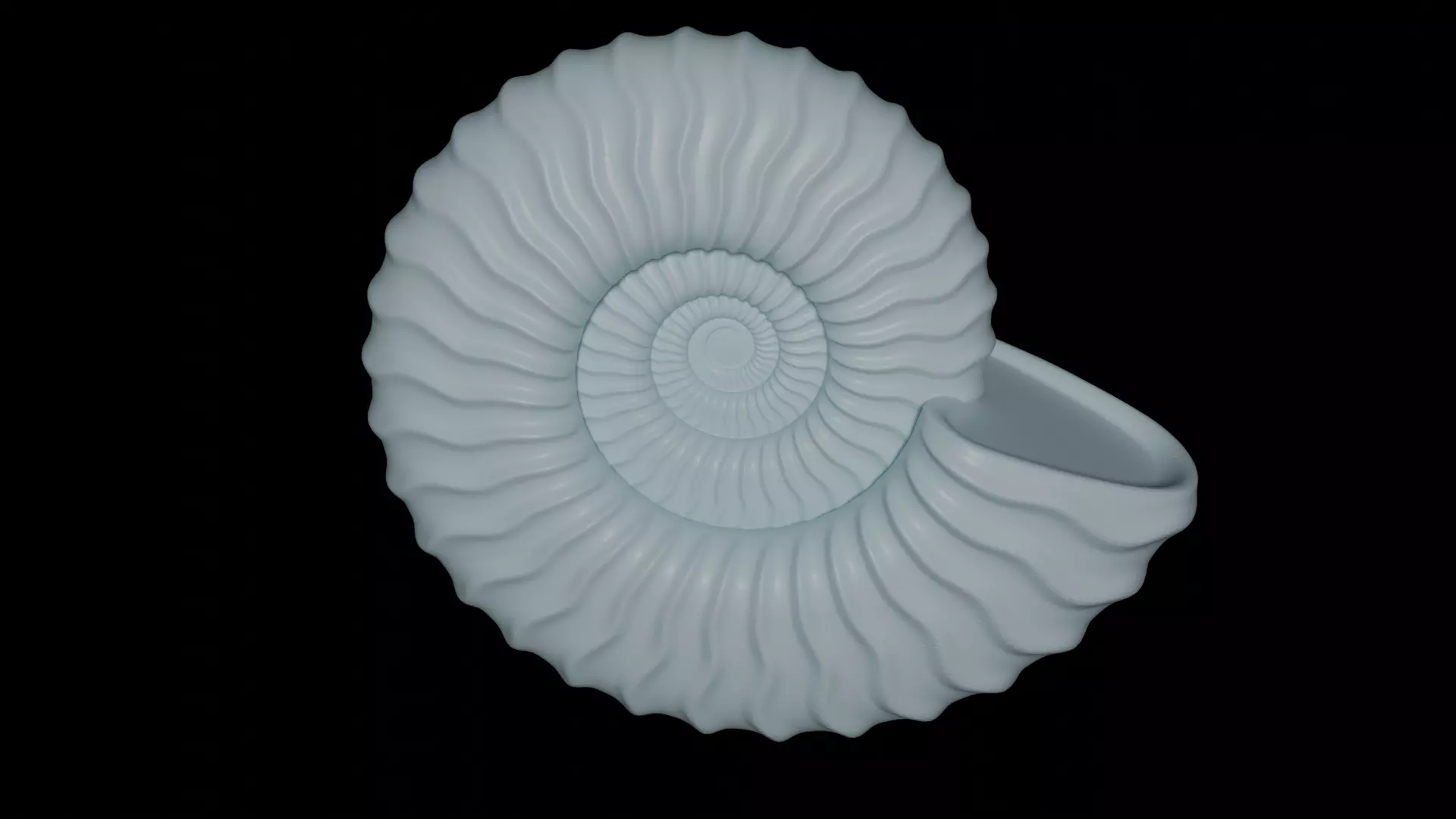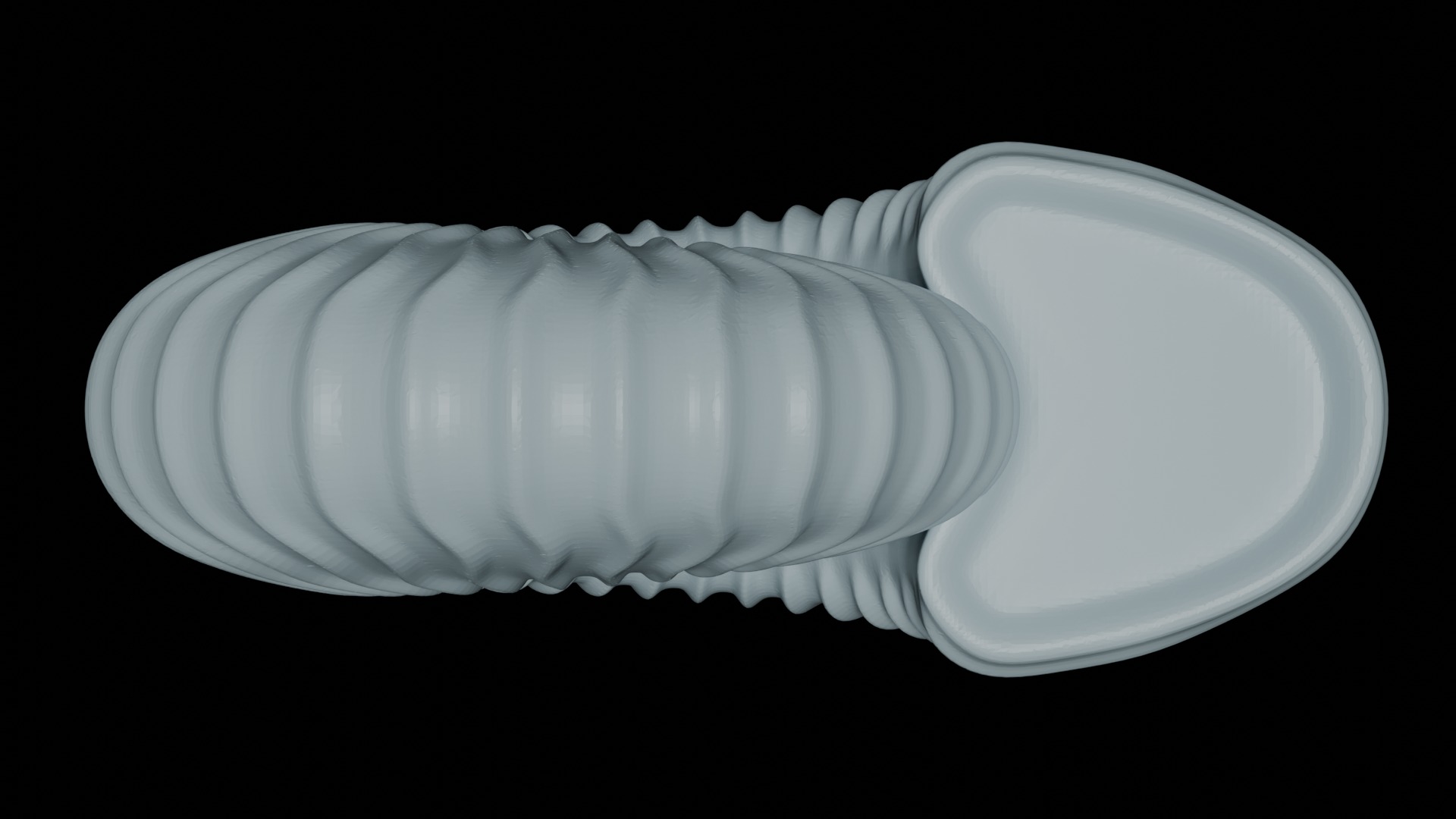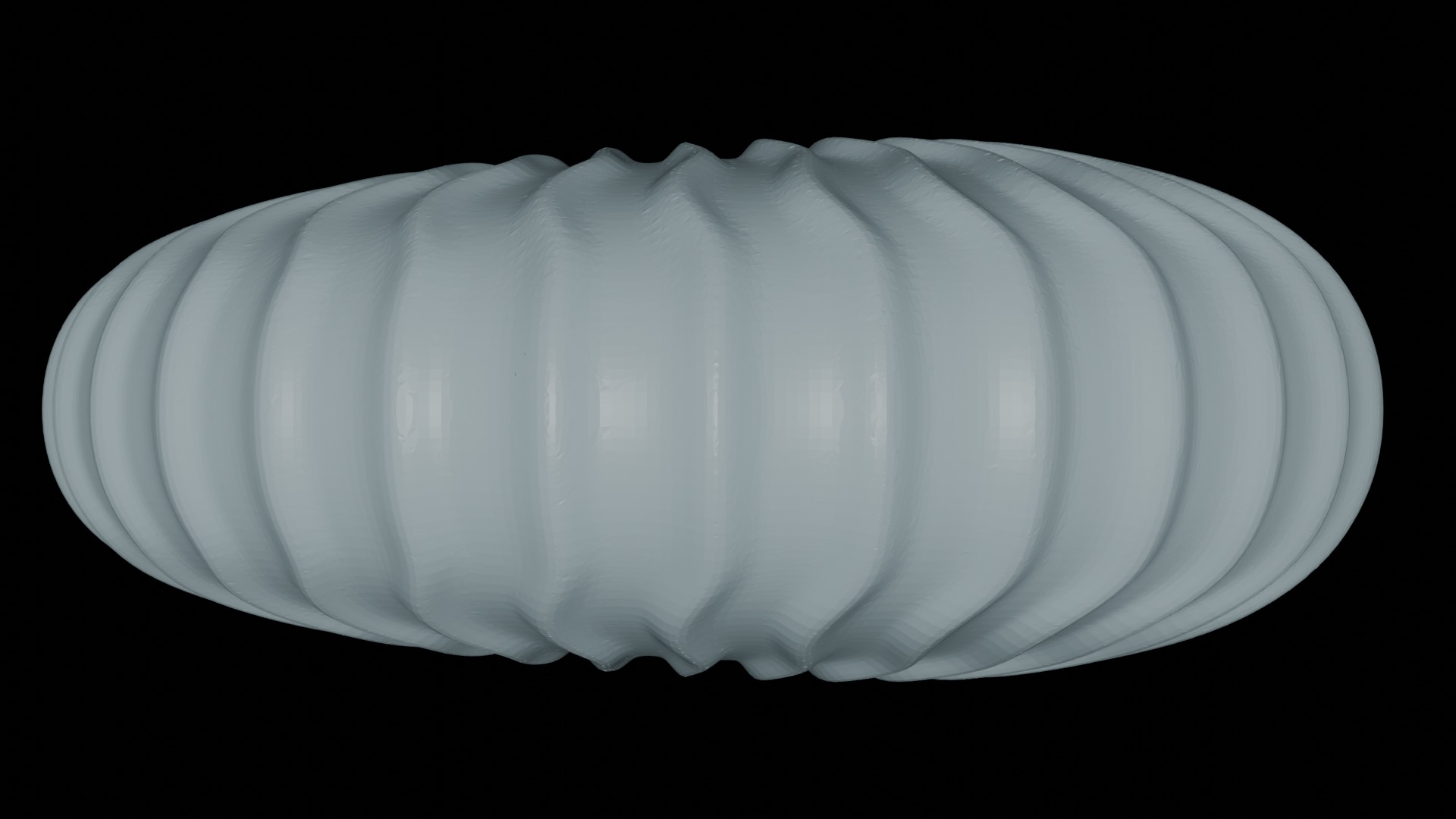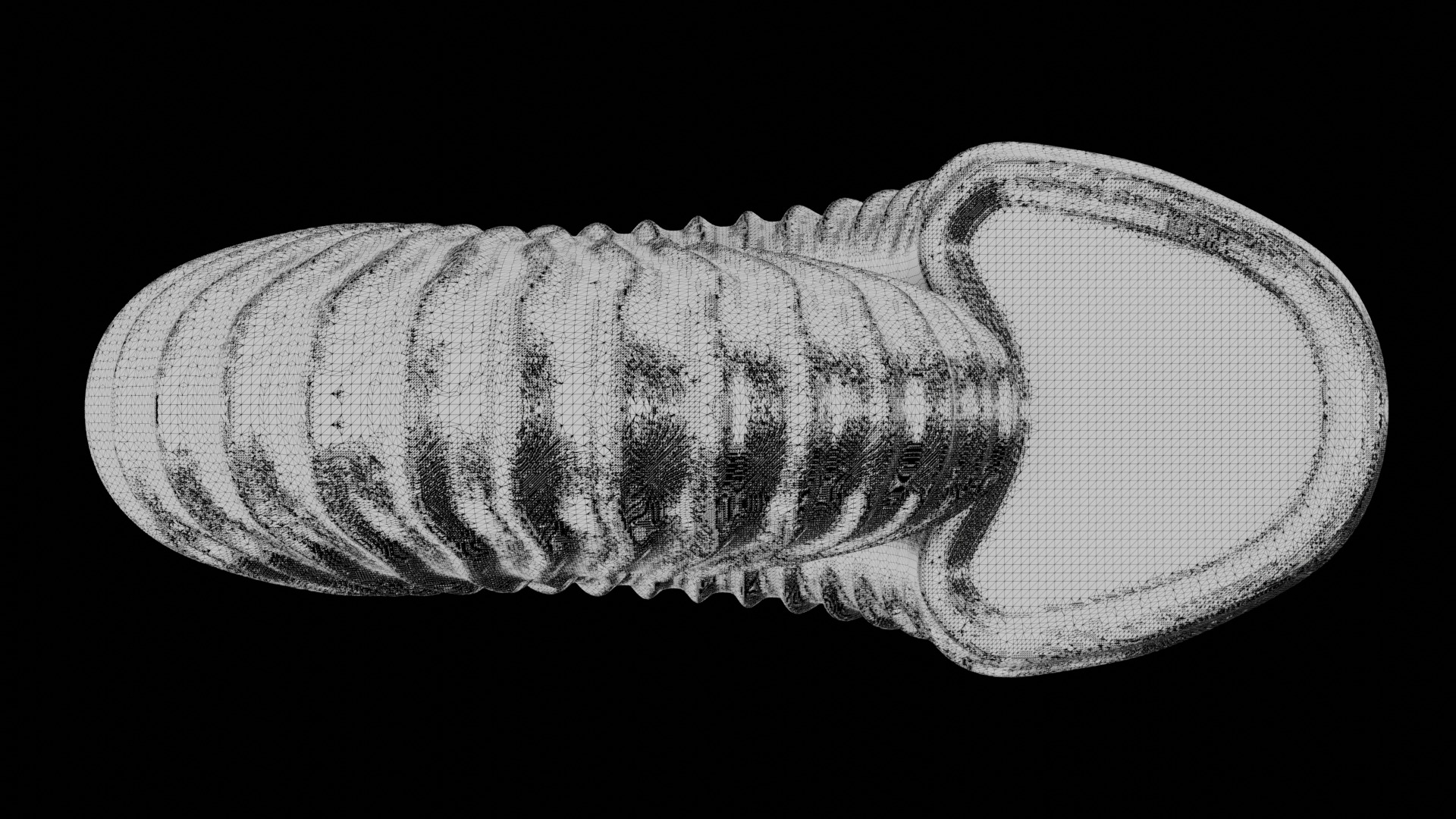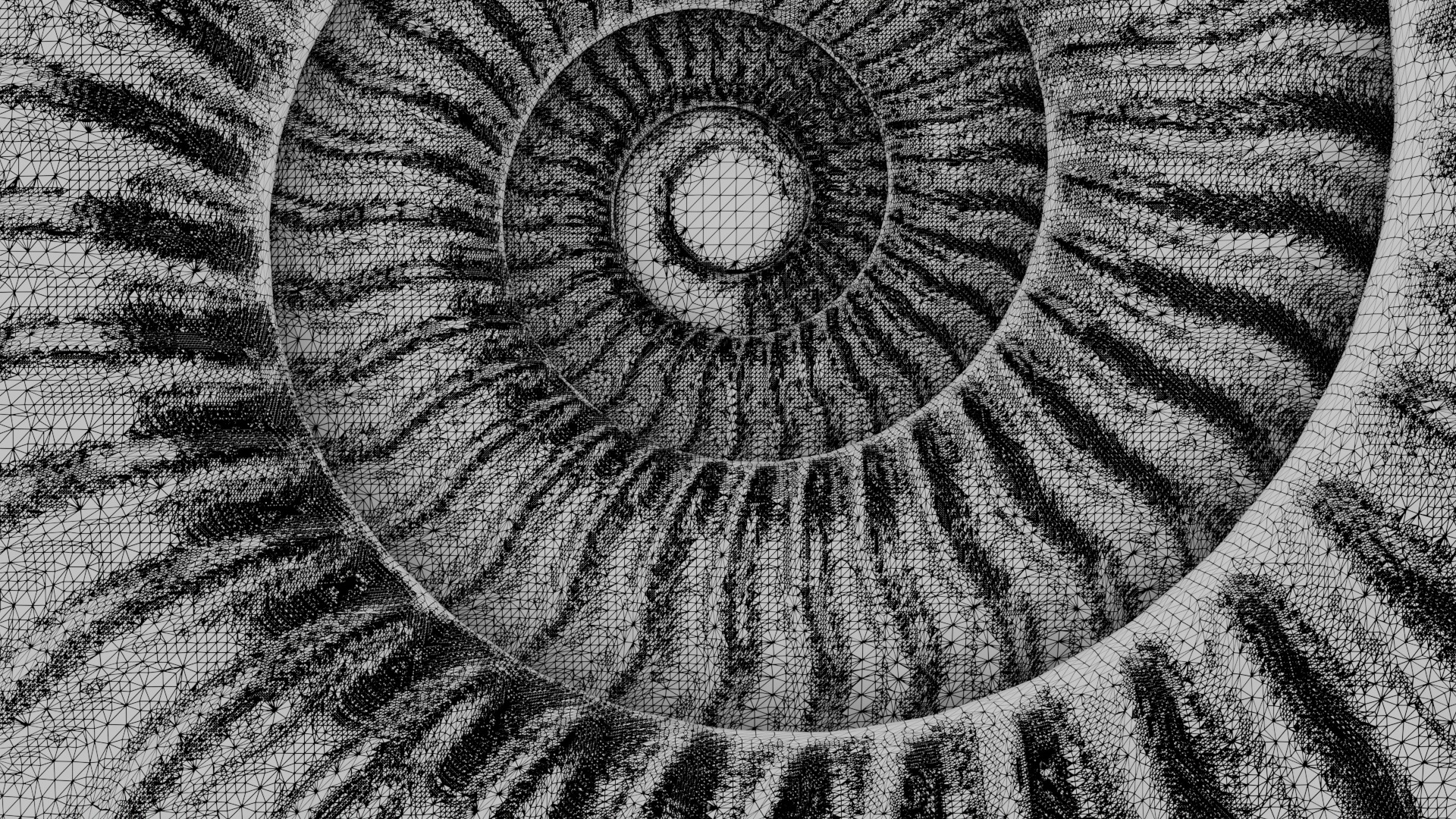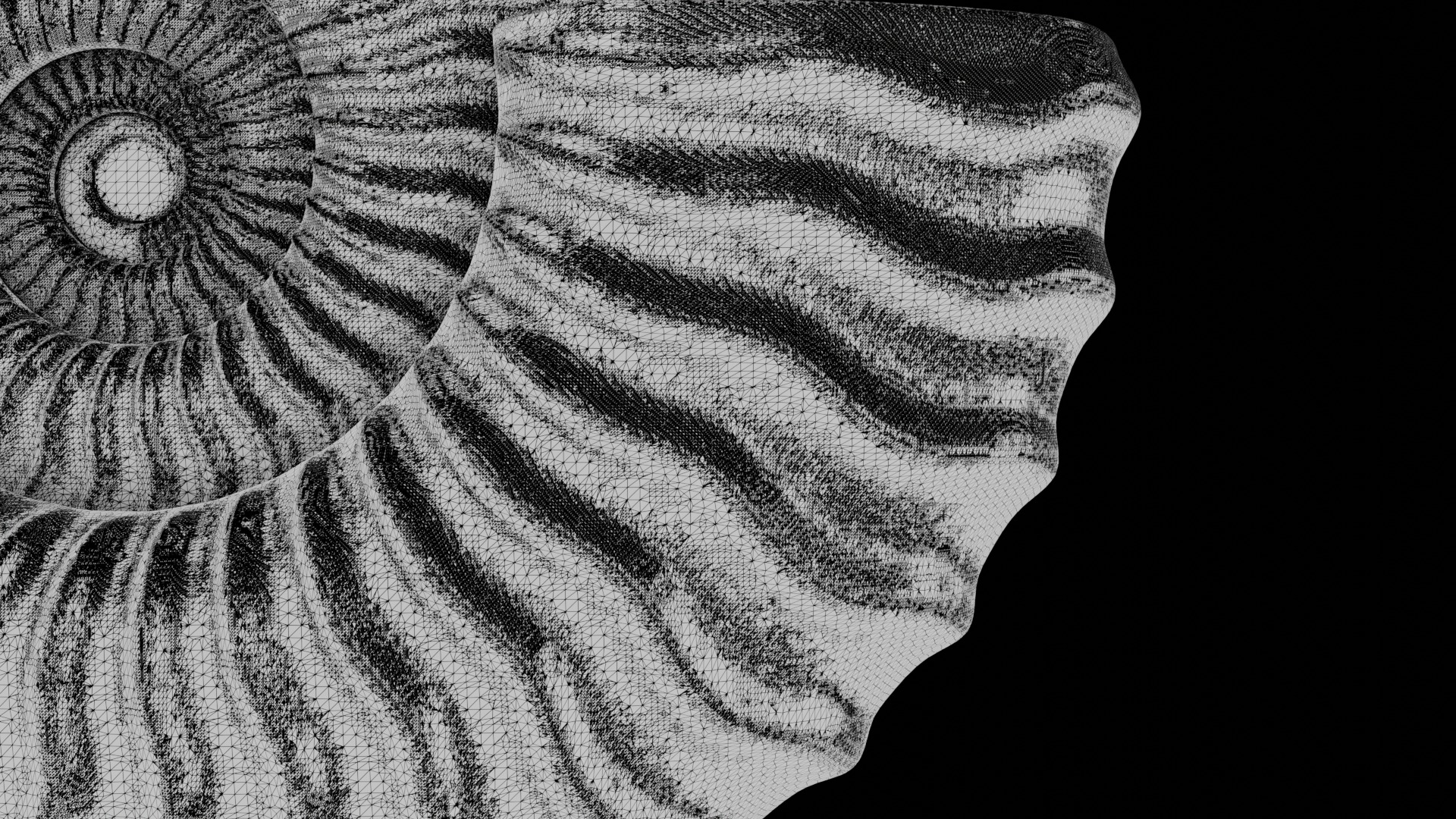
Ammonoid shell with sinuous ribs 3D model
Information: This model emulates a subevolute ammonoid conch, displaying a sinuous ribbing pattern. In subevolute ammonoids, the whorls are loosely coiled, leading to a shell design where the umbilicus— the central depression of the shell where the whorls meet—is relatively exposed. This results in a more large and somewhat compressed overall shell form, enhancing the conch's streamlined profile. The design of this subevolute ammonoid conch model reflects significant ecological adaptations. The relatively streamlined shape likely provided advantages in fast-moving or turbulent waters, enabling the organism to thrive in various marine environments (Hebdon et al. 2020, Peterman and Ritterbush 2022, Ritterbush Kathleen A. 2016, Ritterbush Kathleen A. and Bottjer 2012, Ritterbush K. A. et al. 2014). The ribbed surface may also play a role in interaction with the surrounding environment, possibly aiding in camouflage or even facilitating interaction with other organisms.References:Hebdon N, Ritterbush K, Choi Y. 2020. Computational fluid dynamics modeling of fossil ammonoid shells. Palaeontologia Electronica 23:a21.Peterman D, Ritterbush KA. 2022. Stability–Maneuverability Tradeoffs Provided Diverse Functional Opportunities to Shelled Cephalopods. Integrative Organismal Biology 4:obac048.Ritterbush KA. 2016. Interpreting drag consequences of ammonoid shells by comparing studies in Westermann Morphospace. Swiss Journal of Palaeontology 135:125-138.Ritterbush KA, Bottjer DJ. 2012. Westermann Morphospace displays ammonoid shell shape and hypothetical paleoecology. Paleobiology 38:424-446, 423.Ritterbush KA, Hoffmann R, Lukeneder A, De Baets K. 2014. Pelagic palaeoecology: the importance of recent constraints on ammonoid palaeobiology and life history. Journal of Zoology 292:229-241.
